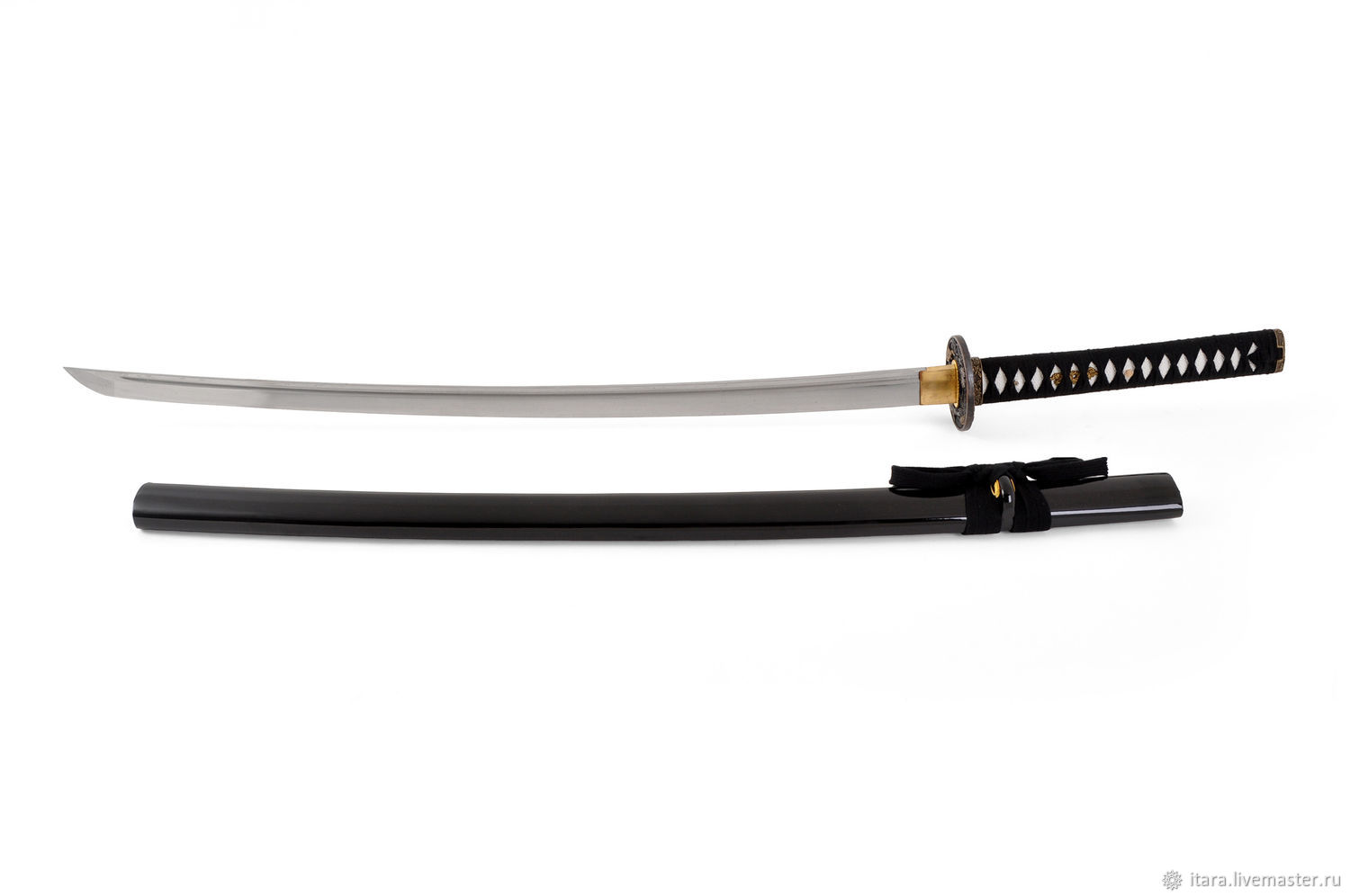The japanese katana sword is a very complex weapon with both practical and aesthetic qualities. To fashion it takes not only physical strength, but also patience and dexterity, a refined eye for the limits of the material and the beauty of a finished blade. It is an art which has developed over the centuries as much in response to stylistic considerations as technical improvements.
The basic construction of a katana is a twisted tempered steel blade with a tang (nakago) which is inserted into a wood or metal hand guard (tsuba). The hilt (tsuka) is traditionally wrapped in leather, or in modern times rayskin. The combination of a sharp cutting edge with a flexible and strong body makes the sword very effective in close combat situations.
It was this characteristic that made the katana the favoured sword of the samurai, the warrior elite of Japan. It was a symbol of their power, wealth and martial prowess. The samurai used the katana for both close-combat and long ranged attacks, usually with their tachi suspended from the belt and a bow in one hand.
When fighting on foot, the samurai would carry a smaller companion sword known as a kodachi which was usually shorter than their tachi. A larger version of the katana is called an odachi and was worn when fighting mounted. This was the preferred sword of the samurai during the Kamakura and Nanbokucho periods.
There are many different types of katana blades, each designed for a particular purpose. Some are designed for speed, others for power or flexibility. The most popular blade shape is the shinogi zukuri which features a line or yokote that separates the main blade finish from the tip section. There are also a number of other blade shapes such as the shobu-zukuri which does not have a yokote, and the kissaki moroha zukuiri which has a curved double edged blade.
Many katana blades have various decorative or ceremonial markings on them. Some are aesthetic, such as dedications in kanji or engravings called horimono that depict dragons, gods or other acceptable symbols. Others have more practical uses such as the hamon, which is an indication of the time, school or swordsmith who made it.
After World War II the Japanese government introduced a military specification for the shin gunto sword which was based on tachi blades. The shin gunto swords that were produced for the army conformed to these specifications and most of those produced for use in the military were machine-made. However, many hand-made katanas were also produced during this time. Some of these were designated as tachi-gunto and others kodachi-gunto. In 1953, when the occupying forces were leaving Japan they recognised that sword making and martial arts were important cultural assets and allowed production of swords to continue. Since then all Japanese swords have been considered as works of art.Visit site






Leave a Reply